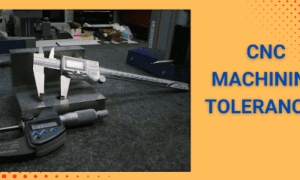The termite larvae are extremely tiny and are almost the same size as the termite eggs. They resemble worker termites in appearance but have bodies that are softer and whiter than worker termites.
Termitelarvae rarely harm structures:
In spite of the fact that adult reproductive termite larvae are not typically the cause of structural damage, it is very necessary to eradicate all worker termites in order to clear an infestation completely. The life cycle of termites or termite larvae stages is similar to that of other insects that go through phases gradually. Beginning as eggs and progressing through nymph, juvenile, and adult stages. In the context of termite development, newly hatched termites are frequently referred to as “larvae,” however you should not confuse this terminology with the larvae of insects that undergo complete metamorphosis, such as flies.
Termite larvae size:
The termite larvae size can change depending on the kind of termite as well as the termite larvae stages they are in throughout their growth. Termite larvae resemble grubs in appearance and are typically rather tiny and white in color. On average, the length of a termite larva ranges from a few millimeters to one centimeter. However,what are termite larvae can be even shorter.Termite adults can reach lengths of up to three centimeters.
In comparison, the length of an adult worker termite is typically around a quarter of an inch (6.4 mm).
How to Tell the Difference between Termite Larvae and Other Insects:
1. Ants and termite larvae are similar in many ways.
Adult termites and ants have a lot in common. The larvae of the two species are quite different from one another. If you are unsure if you have termites or ants, you should look for the larvae and inspect them if you find any. You can seek for the larvae in the same places you would look for ants.
The appearance of termite larvae is quite similar to that of adult worker termites and nymph termites, except that their heads, legs, and antenna are segmented and independent from one another.
2. Acquire the knowledge necessary to recognize psocids and booklice.
Psocids, commonly known as booklice, are very little and white in color, just like the termite larvae. In contrast, over their whole lives, booklice will never grow any longer than around 1/16 of an inch to 1/8 of an inch (between 1.6 and 3.2 mm). They don’t actually consume the wood itself; rather, they feed on the fungus that grows on books, paper, and other starchy things while they are in damp surroundings.
It is possible that you discovered psocids rather than termite larvae if there is no damage to the wood or any other indications that termites have been present. Bring in a couple specimens of the pests in question to your neighborhood’s exterminator just to be sure.
Books, newspapers, moldy foods and grains, old wallpaper, cardboard boxes, and other paper products are also potential harborages for psocids. Termites, on the other hand, are most frequently discovered in regions that include wood, such as walls, wood piles, stumps, crawl spaces, and other wooden areas.
3. Investigate the possibility that beetles were responsible for the damage to the wood.
There are many different kinds of insects that eat on wood, not just termites. Powder post beetles have a completely different appearance to that of fly termites. They have bodies that are darker and tougher, and some of them may have fine hairs covering the entirety of their bodies. The larvae of the powder post beetle are white. Along their backs are a row of very little spines.
Employing professional exterminator is the most reliable approach to determine whether or not you are dealing with powder post beetles or termites. They might be able to recognise the pest based on the distinctive pattern of damage that it causes.
Ant larvae look like grubs. They do not seem to have any legs or eyes. And it does not appear that they have a head that is segmented or otherwise different from the rest of their body. They also have a fine, hairy covering all over their bodies.
4. Check to see whether or not they are maggots.
Maggots are a different kind of larva than termite larvae because they develop into flies rather than termites. They resemble termites in that they are white and have squishy bodies. Maggots, in contrast to the termite larvae, do not have a distinct head, or if they do, it is not visible. Termite larvae do have a distinct head. They might have legs, but the remainder of their bodies is more tube-like in structure.
Conclusion:
Termite populations can’t function properly without termite larvae, and ecosystems can’t function without termite larvae. Termite larvae are essential to the survival of termite nests. Researching termites is also important for developing effective pest control measures since, if they are allowed to go unchecked, these pests may cause considerable structural damage to buildings and other wooden structures.
FAQs:
How do you identify termite larvae?
The termite larvae are extremely tiny and are almost the same size as the termite eggs. They resemble worker termites in appearance but have bodies that are softer and whiter than worker termites.
What color are termite larvae?
The colour of termite larvae is typically white, and they are nearly transparent in appearance. It is important to keep in mind those older worker termites and nymph termites both have a colouring that is similar to pale, therefore colour alone cannot tell whether or not anything is a larva. It’s possible that they’re soldier termites if their bodies are pale and white but their heads are darker. These termites have reached adulthood.
How do you identify termite eggs?
A termite egg is extremely small, white, and shaped like an oval. People almost seldom come across termite eggs since they are typically laid deep within the nest. In point of fact, the nests of subterranean termites are often found between 4 and 18 inches below the earth, but the nests of dry wood termites are typically hidden within the structures themselves, including the walls and the furniture.



























